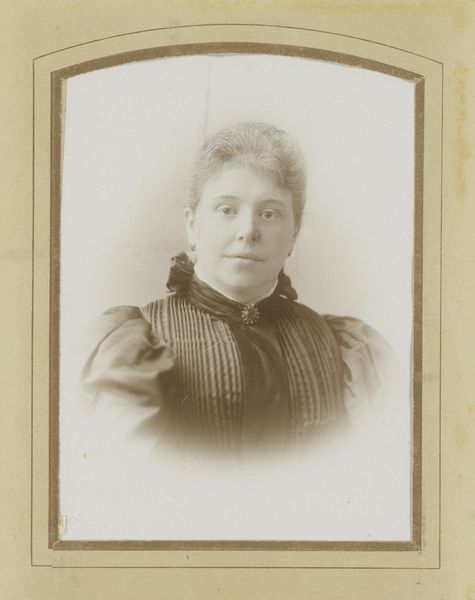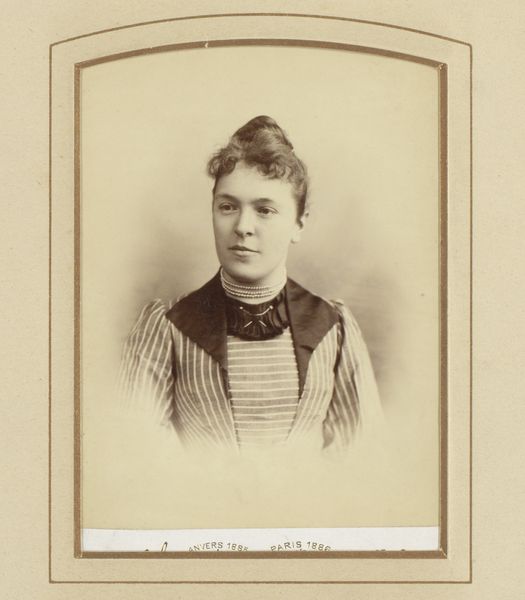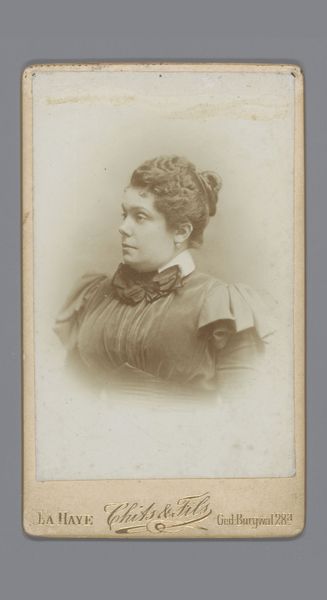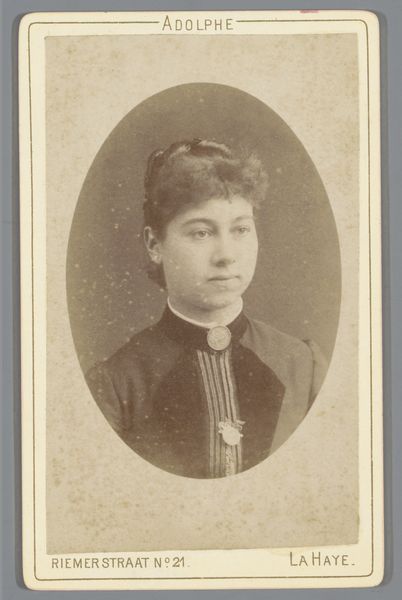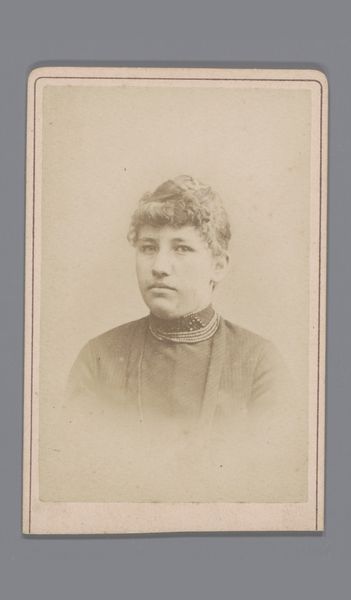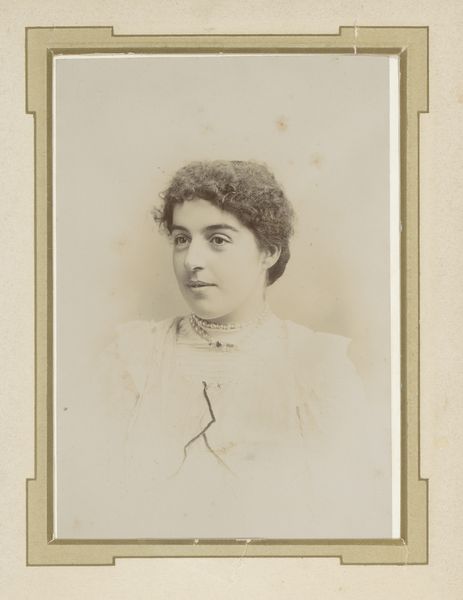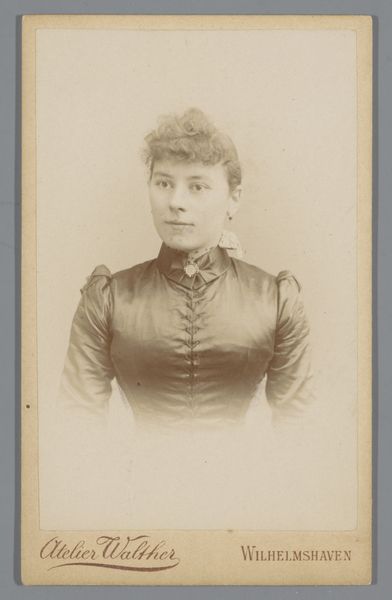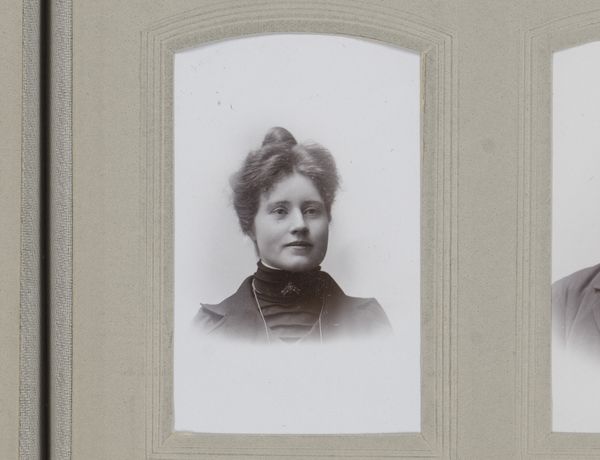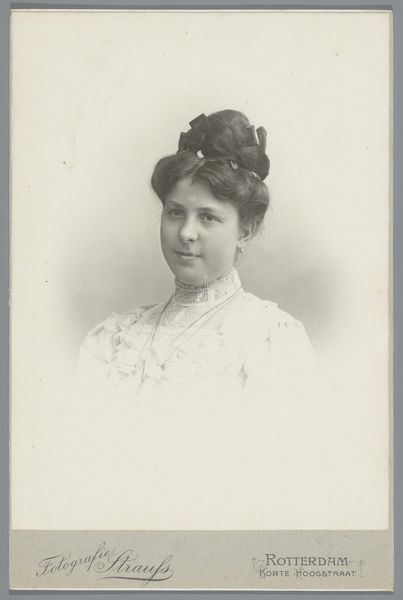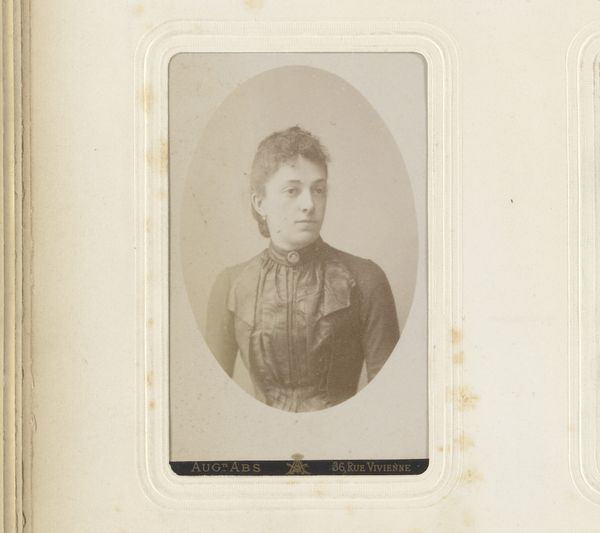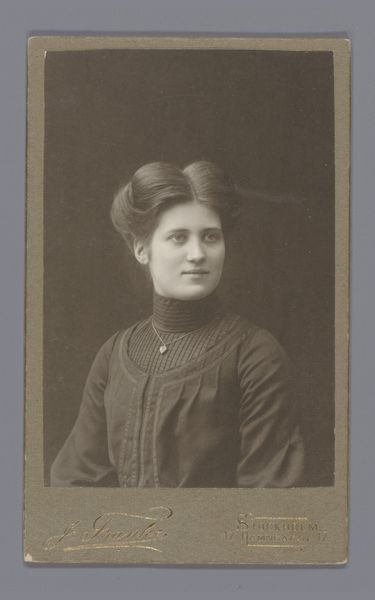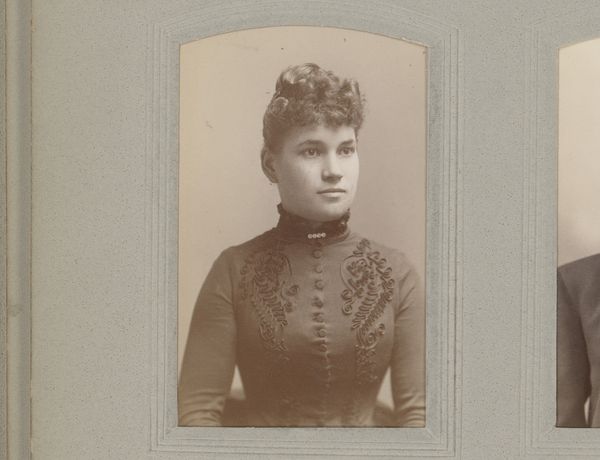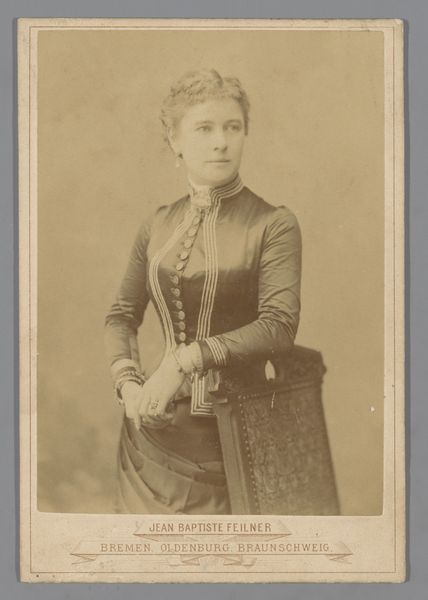
Dimensions: height 134 mm, width 96 mm
Copyright: Rijks Museum: Open Domain
Curator: Here we have a photograph titled "Portret van een jonge vrouw," or "Portrait of a Young Woman," created sometime between 1875 and 1896, attributed to Paul Joseph Nicolas Nestor Schaffers. It's a gelatin-silver print, which was a popular process in the late 19th century. Editor: My immediate reaction is to the overall tonal range. It feels very subdued, with the darker blacks drawing focus to the young woman’s visage framed within that lovely oval. The symmetry of the image is quite calming, too. Curator: That subdued tone and formal pose are very much in line with portraiture conventions of the time. Photography had become more accessible, allowing a broader segment of the population to document their image, participate in popular portraiture trends, or commemorate certain achievements. Editor: I find the focus on texture interesting—look at the detailing in her hair and dress. There's this tactile quality to it all despite the medium. The romantic style almost softens the photograph into looking like a charcoal drawing. Curator: Exactly. Studios and photographers understood they were competing against more established, traditional forms of portraiture, and strove to produce portraits that emulated painting and drawing by incorporating similar soft lighting and tonal effects. Editor: I do wonder what the choice of oval matting contributes. Does it symbolize something beyond just conventional presentation? Curator: Well, framing in general dictates how we, the public, view art, but oval matting might have simply been considered an elegant way to offset rectangular photograph prints for middle class patrons desiring fashionable photographic presentation in the 1880s and 90s. Editor: It is an elegant rendering. Though, the gelatin silver process can lend a bit of warmth to cooler subjects… I am interested in that too! The surface quality of that gelatin. Curator: In this time, most photographs existed because there was a societal desire for formal portraits. Perhaps what’s important is not only who is pictured, but how, where, when and, maybe most importantly, why! Editor: True. When you examine all its formal elements, one recognizes there's a complex interaction happening between medium and artistic desire that extends far beyond capturing a likeness.
Comments
No comments
Be the first to comment and join the conversation on the ultimate creative platform.
